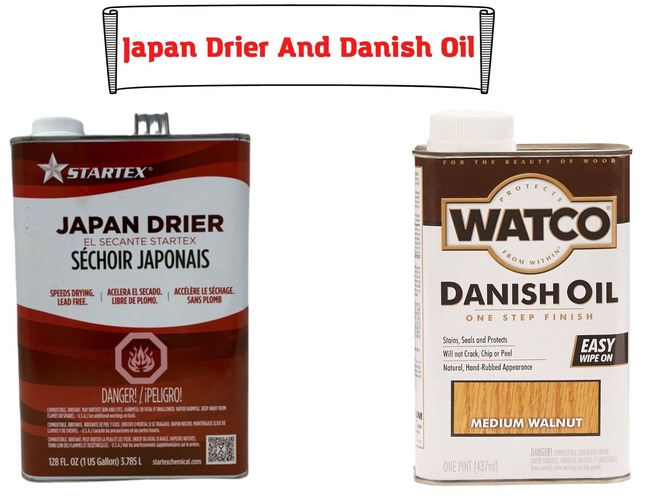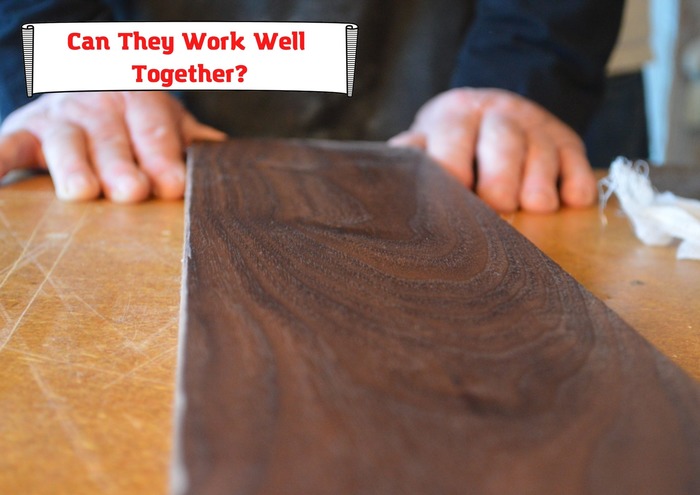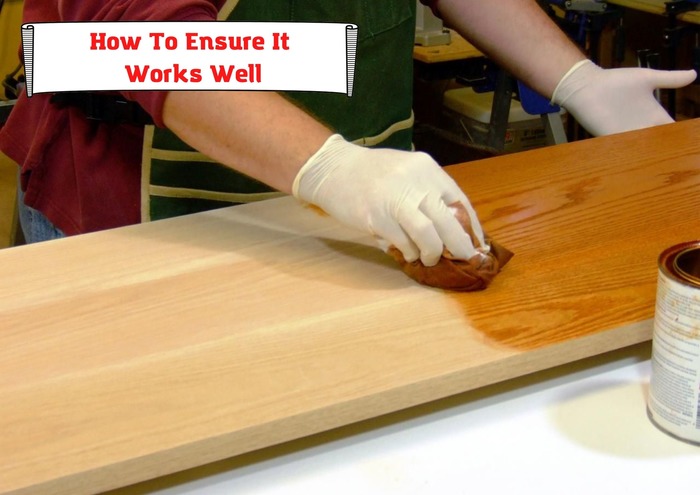
Danish Oil is a great oil-based finish. But sometimes, woodworkers and DIYers do not have the patience to wait for the long curing time. To speed up drying time, Japan drier is often resorted to. But you may ask, can Danish oil and Japan drier work well together?
Below is a discussion about the workability of Japan drier and Danish oil.
This article gives practical knowledge of Japan drier and Danish oil, answers whether they can work well together, and lists some helpful tips to ensure the effectiveness of Japan drier and Danish oil.
Japan Drier and Danish Oil
Understanding Japan Drier and Danish Oil will give you a practical familiarity with how they work and why they work well. First, what is Japan Drier?
Japan Drier
Japan drier is a unique mixture of free drying agents that are free of lead, which speeds oil-based finishes.
The product is amazing because it quickens the drying time between coats of finishes regardless of the prevailing weather conditions. It is essentially a metallic salt that aids the chemical linking of the molecules.
It does this by functioning as a trigger. Many times, the metallic salt used is cobalt salt. Other times, it may be cobalt linoleate or cobalt naphthenate. It is usually added to the oil-based finish like Danish oil to quicken the curing process of the finish.
It is usually a mix of 97% Naphtha and 3% cobalt salt. Japan drier comes in handy because the longer a finished surface stays wet, the more likely it is to get dirt, dust, and debris stuck on its surface.
Danish Oil
Danish Oil is a hard drying oil usually used for wood finishing. It is generally made of boiled linseed oil or tung oil. When applied and exposed to the atmosphere, it reacts with oxygen to reach a solid form. Furniture manufacturers frequently use it to provide a hard-wearing finish for wood.
Although it is usually made of boiled linseed oil or tung oil, different manufacturers make Danish oil with their distinct formula.
However, it is a combination of oil, varnish, and thinner. This is to give the wood more protection than ordinary oil will do. The thinner may be a mineral spirit or even turpentine. The varnish in the Danish oil composition provides the wood with chemical and wear protection.
It also adds additional moisture protection while the thinner aids the absorption process into the wood rather than just sitting on the wood. Danish oil enriches the look of wood, gives it protection and a natural darker look.
Can They Work Well Together?

Oil-based finishes such as varnishes and paints typically dry by oxidation. This means that they harden by absorbing oxygen from the air. So the metallic salt, in the Japan Drier impressively increases the ability of the oil-based finish to soak up oxygen molecules from the air.
Danish Oil is an oil-based hard drying wood finish that is usually prepared with tung oil or polymerized linseed oil. So there should be no concern if you use them together.
But it would be best to use the Japan Drier in very small quantities. This is important because excessively applying the Japan drier on the oil-based finish can result in an unusual darkening of the product. Sometimes, you may find that it results in cracks.
It would also help to test that a sample sheet of a sheen level should be matched because usually, you will notice that the drier has enhanced the gleam and the gloss. If you do not, you may end up with mismatching sheen levels.
Note also that Japan driers dry fast. This means that you do not have much drying time. So you must be careful and quick with the brushes if you do not want brush marks to be visible because a reduced drying time means a reduced leveling time.
If you add more than the amount of Japan drier you need to a canned product, you may have to deal with the drier gelling even if the can is sealed. Also, using Japan drier ensures that the Danish oil will dry. This is especially important when you make the Danish oil yourself and you have concerns over the distinct components of the mixture.
The good thing about it is that it will get down in the wood and keep moisture from displacing back and forth. This means the wood will not contract and expand as the temperature changes.
How To Ensure It Works Well

To get the best result, it would be best to take note of some important tips.
- Prepare The Danish Oil
This could depend on the temperature in your environment. But to get the best results, it would be best to leave the can of Danish Oil in hot water a few minutes before mixing it with the Japan drier. Take note that you have to leave the Danish oil in hot water, not boiling water.
The heat in hot water will loosen the oil and ensure that the mixture is well integrated. This is important because you may get unsatisfactory results if the mixture is not sufficiently incorporated.
Leaving the can or container of Danish oil in hot water a few minutes before the mixture and application will aid better results.
- Pay attention to the mixture ratio.
Sometimes, your Japan drier may come with a specified mixture ratio. It would often depend on the amount of surface area to be covered.
But to be safe, it would be best to mix at a particular ratio instead of just adding “a little drop.” If you add a little drop of Japan drier, you might run into problems getting the exact measurement to give you the same sheen you got from the first mixture after exhausting it.
Many woodworkers also recommend a 5% ratio of Japan drier to 95% of Danish oil. If you’d be using a wood hardener, it should take up the ratio from 95%. It should not affect the 5% ratio of the Japan drier.
One easy way to do this is to label a jar of measurements. With a marker, you can divide the container into measurements of 10 equal parts. The last 10% should be divided into equal halves. When you pour to mix, ensure that the other mixture ingredients stop at the last 9th and half part of the jar. Add the Japan drier for the last part.
Many also recommend not more than 2 oz per gallon of Danish oil. If the brand of the oil states otherwise, it would help to stick to the measurement. You can use a measuring cup for accurate measurement.
Keep in mind that although you do not have to be very precise with the measurements, it would be best to be as close to accurate as possible.
- Apply On Time
To get the mixture to work well, it would help to apply to the wood surface on time. Once you add Japan drier to Danish oil, you have a lesser leveling and drying time.
If you delay and allow the mix to gel, you will not get the best results. It would be wise to stir till it is well mixed and apply to the wood surfaces as soon as possible.
Bottom Line
Japan drier is great for catalyzing drying. It is a versatile product that can be used with paints and oil-based finishes. On whether it works well with Danish oil, the answer is an absolute yes.
Combining Japan drier with Danish oil before applying it as a topcoat will present no problems. But it would help to pay attention to the few tips above. This is important as it will ensure you get the best quality possible.
- Can You Unmix Paint: Techniques, Consequences, Alternatives - February 23, 2024
- Does Primer Need to be Mixed? Effective Primer Application - February 22, 2024
- How to Make Old Paint Usable Again: Retrieving and Preserving Paint - February 21, 2024



